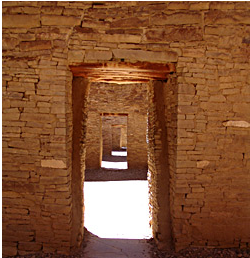Publication Date
7-1-2011
Abstract
This dissertation examines the relationship between social violence and ceramic resource procurement. Do people in middle-range societies alter resource use in response to conflict? Specifically, does social strife influence the distance to which potters in middle-range societies will travel to collect ceramic resources? Distance and quality are primary elements in clay selection. Clay is heavy, so for many potters distance is the determining factor in clay selection (Arnold 1985, 2000). Arnold (1985, 2000) estimated procurement thresholds using worldwide ethnographic data from 111 traditional societies. He found that for both clays and tempers, people prefer to travel only one kilometer, but they will go up to four kilometers if necessary. These thresholds were the basis for the field component of this research. Pottery production occurred throughout the American Southwest under conditions of pervasive conflict in the 13th century A.D. The Gallina area is an ideal location for investigating resource procurement and social violence in northwestern New Mexico. Conflict in this area is evidenced by defensive architecture, such as towers and cliff houses (Haas and Creamer 1985; Mackey and Green 1979; Schulman 1949, 1950), burned structures with human remains (Gallenkamp 1953; Hibben 1944; Mackey and Green 1979), and human remains with embedded projectile points and skull trauma (Chase 1976; Mackey and Green 1979). Two sites in the Gallina area were chosen, one with a defensive setting and architecture the other with an open site plan and no defensive structures. Ceramics from each of the sites and the clay resources in proximity to the sites were examined to see if conflict affected resource selection. X-ray diffraction (XRD) determined the clay mineralogy of ceramic pastes and the collected natural clays, petrography identified the aplastic mineralogy of the sherds and collected samples, and inductively coupled plasma-mass spectrometry (ICP-MS) provided the chemistry of the ceramic pastes and the natural clays. Numerous field and laboratory characterizations provided more information about the qualities of the available clays and the ceramics themselves. The combined results of the laboratory tests, mineralogical studies, and chemical comparisons indicate that Gallina potters did not alter their resource selection in response to social violence.
Keywords
Gallina, Ceramics, Southwest, Social Violence, Petrography, ICP-MS
Project Sponsors
Hibben Trust, Clay Minerals Society, UNM Graduate Professional Student Association, UNM Office of Graduate Studies
Document Type
Dissertation
Language
English
Degree Name
Anthropology
Level of Degree
Doctoral
Department Name
Anthropology
First Committee Member (Chair)
Patricia L. Crown
Second Committee Member
James L. Boone
Third Committee Member
Richard C. Chapman
Fourth Committee Member
Jane Selverstone
Recommended Citation
Constan, Connie Irene. "Ceramic Resource Selection and Social Violence in the Gallina Area of the American Southwest." (2011). https://digitalrepository.unm.edu/anth_etds/15


Comments
Photocopy of original document.